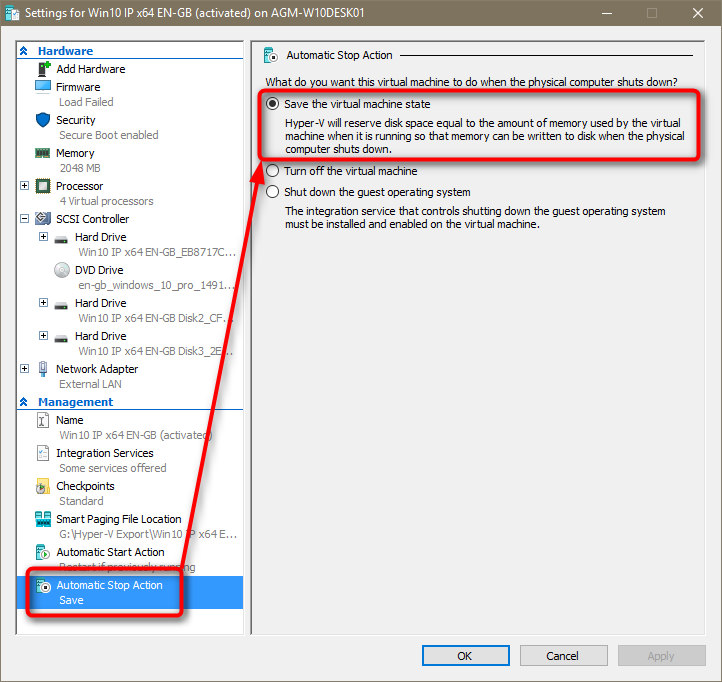New
#1
Suspend and Resume VM much slower on HYPER-V than vmware
Hi there
particularly @Kari - you seem to be the resident expert on HYPER-V !!!!
I have two reasonably identical VM's (Linux CENTOS 7 basically runnng SAMBA, PLEX media server, logitech media server and sharing some files).
The shared files are on 2 logical RAID 0 arrays -- Hardware RAID controller used ( actual hardware 2 X 4 TB and 2 X 3 TB 7200 rpm HDD's) connect as RAW HDD's so the native XFS Linux file system is used on the VM's -- no problem there with that BTW.
Running Windows 2010 PRO x-64GB version build 1607 with vmware - suspend VM -- takes about 4 secs. With HYPER-V suspend takes sometimes over a minute.
Both VM's have the OS itself on an SSD and they aren't running concurrently - to get HYPER-V you need to disable vmware and vice versa.
At suspend time the servers don't have any clients accessing them - i.e there's no remote TV's watching streamed video from PLEX.
Any ideas !!! -- can't understand why the suspend and resume function takes so long on HYPER-V -- it's a very useful facility BTW.
Cheers
jimbo


 Quote
Quote


